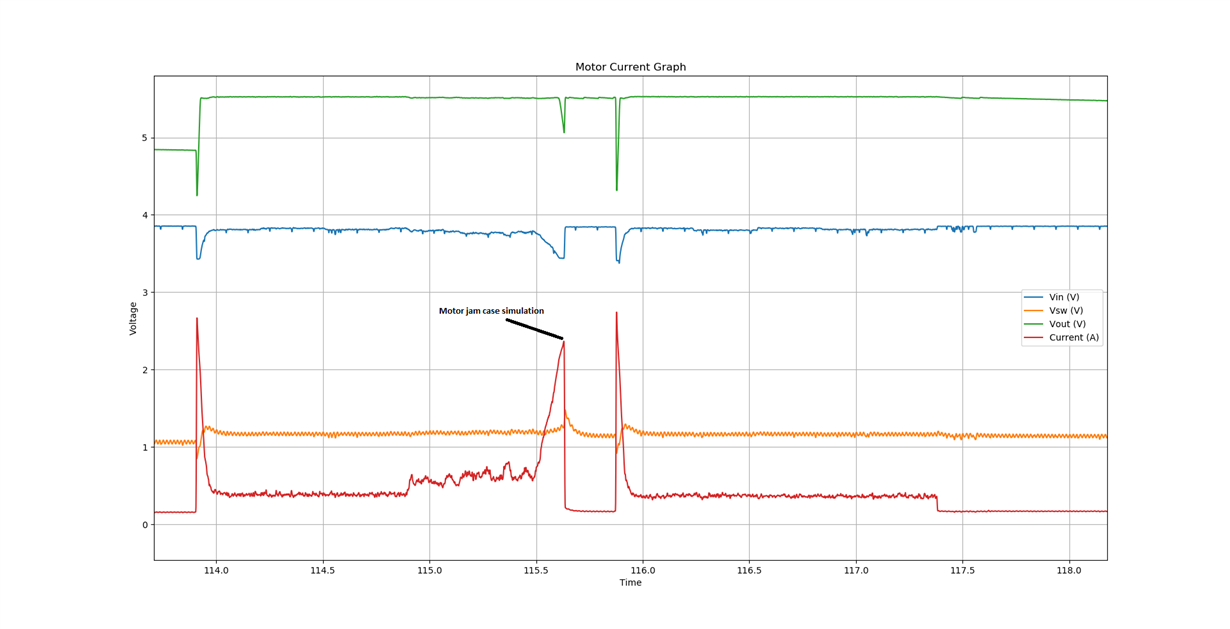Other Parts Discussed in Thread: DRV8837
Hello,
I have an application of using the TPS61251 with the DRV8837 and I am seeing almost 7V on the SW node. I see 7V is the abs max spec for the TPS61251, is there any sort of diode clamping, or other measures, I can do to prevent >7V conditions or am I limited to reducing the current pulled by the motor?
Thanks,
Nick


